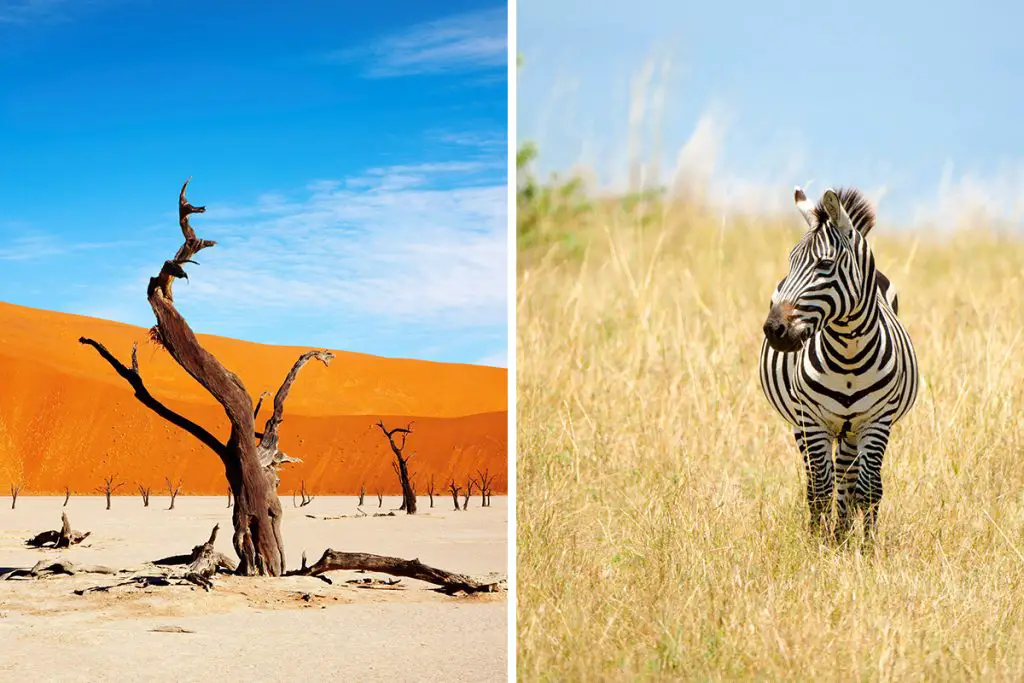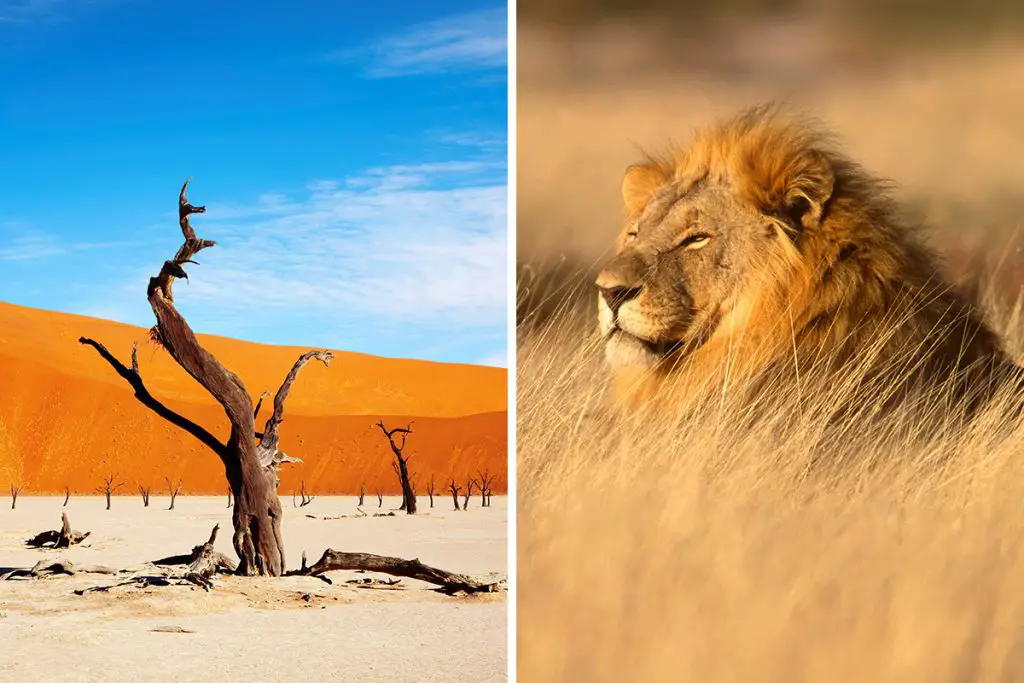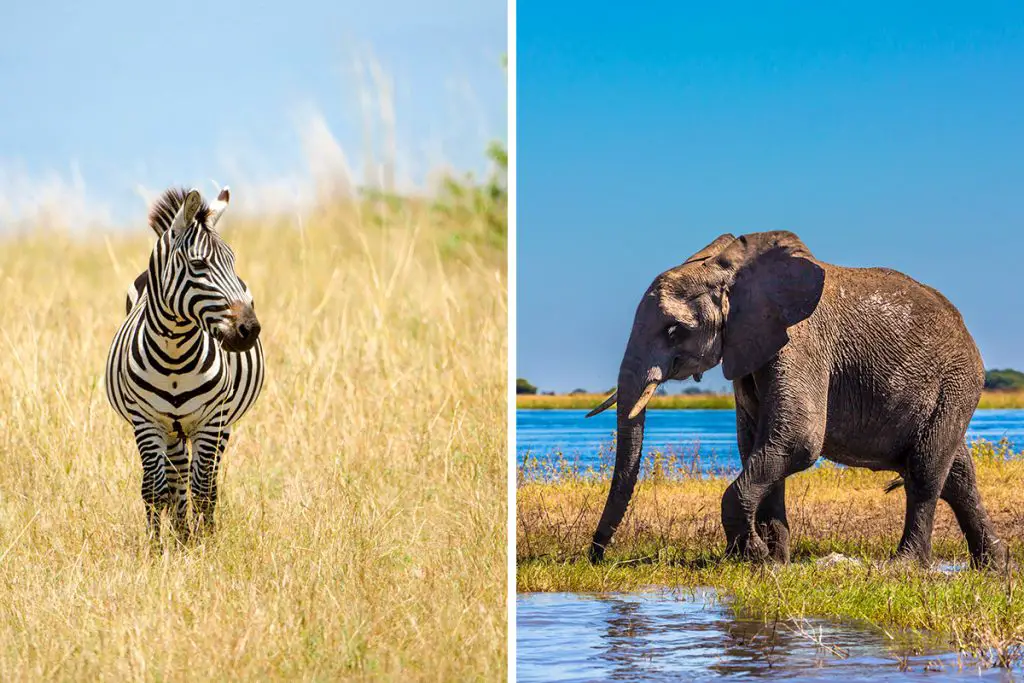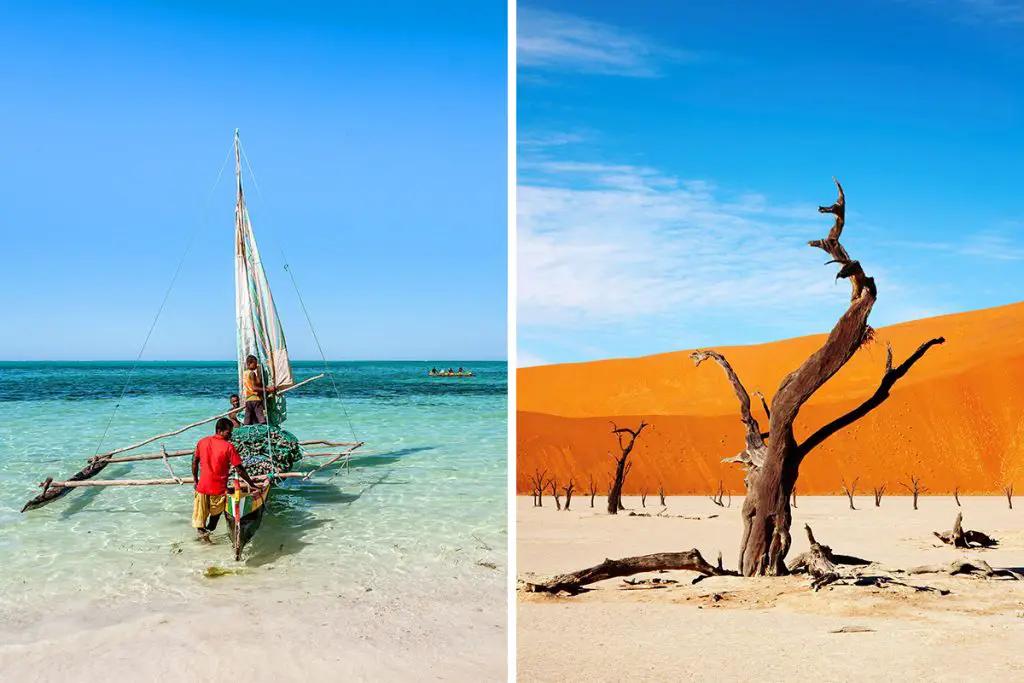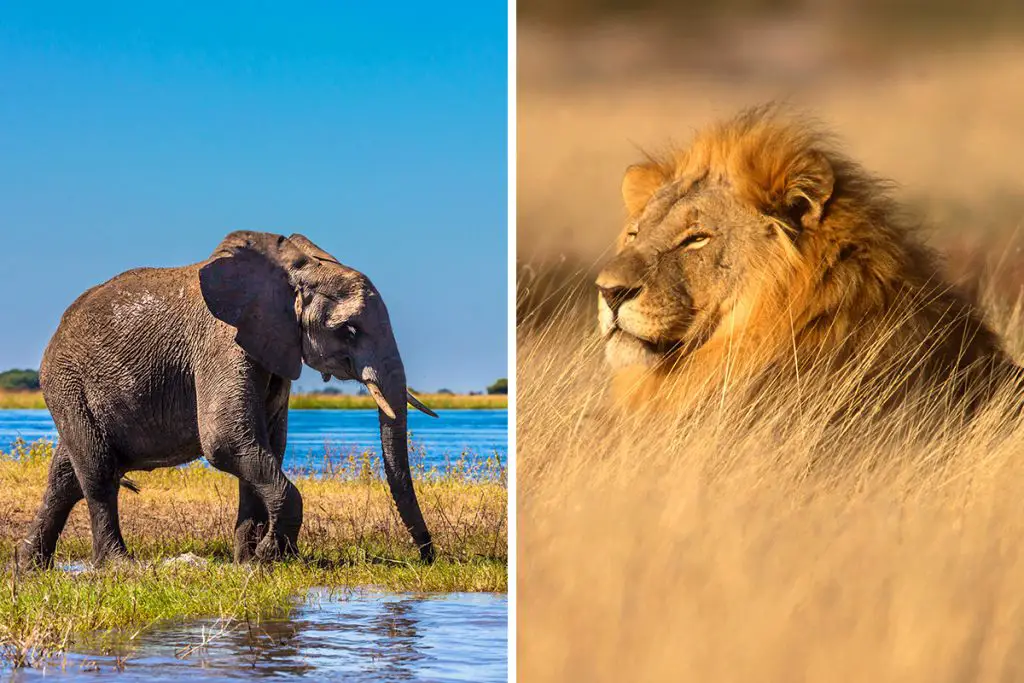You’re about to embark on a journey of discovery, unraveling the allure of two distinct southern African nations: Botswana and Namibia. If you’ve ever wondered about the diverse histories and cultures that have shaped these countries, you’re in the right place. So, shall we dive in and explore the rich tapestry of Botswana and Namibia’s past and the cultures that thrive within them today?
History & Culture
Before you set foot in Botswana or Namibia, it’s fascinating to appreciate the histories that have shaped these nations. They both whisper tales of ancient civilizations, colonial times, and pathways to independence, but each narrative is distinct and illuminating.
Botswana, once known as Bechuanaland during the colonial era, has a history shaped largely by its interactions with migrating tribes and European colonists.
The San people, one of the oldest civilizations on earth, originally inhabited Botswana, leaving a profound legacy that includes incredible rock art. In the late 19th century, it became a British protectorate until gaining independence in 1966.
Botswana’s culture is a rich blend, but the Tswana culture, embodying about 79% of the population, is dominant. Traditional music, dance, and artisan crafts like basket weaving are integral to Botswana’s cultural identity.
In contrast, Namibia has its unique historical path. It is home to various ethnic groups, with the San, Damara, and Nama people being the earliest known inhabitants.
The late 19th century brought German colonization, making Namibia the only African nation with a significant German influence. The colonial period left indelible marks on Namibian culture, noticeable in architecture, language, and cuisine.
Namibia gained independence in 1990, making it one of the youngest nations globally. Despite this, it boasts a rich cultural tapestry woven from the traditions of Ovambo, Herero, Damara, Nama, and other ethnic groups.
So, whether it’s Botswana’s serene wilderness echoing with traditional Tswana music or Namibia’s German-influenced towns pulsing with diverse ethnic traditions, your choice will depend on which cultural and historical narratives resonate more with you. In essence, both countries offer more than just scenic landscapes; they present unique histories and vibrant cultures that breathe life into their beautiful terrains. Each is a cultural treasure chest, a history buff’s paradise, waiting for you to delve in and explore.
Attractions & Activities
The allure of southern Africa’s wild landscapes extends beyond just their natural beauty. Both Botswana and Namibia house a wealth of attractions and activities that invite you to immerse yourself in their breathtaking environments.
In Botswana, the Okavango Delta is undoubtedly a jewel. It’s a maze of lagoons, channels, and islands, making it a haven for wildlife. Exploring this magical water world on a mokoro (traditional canoe) is an experience like no other.
For those interested in history and archaeology, the Tsodilo Hills are a must-visit. Here, you can marvel at over 4,500 rock paintings dating back thousands of years. And let’s not forget the wildlife-rich Chobe National Park, where you can indulge in incredible safari experiences, tracking elephants, lions, leopards, and countless bird species.
Namibia, on the other hand, offers a different set of marvels. The towering red dunes of Sossusvlei are a sight to behold, and climbing them at dawn for a mesmerizing sunrise view is truly unforgettable. Etosha National Park provides top-tier wildlife-watching opportunities, with large concentrations of lions, elephants, and rhinos.
For a dive into the past, the Twyfelfontein area houses a massive open-air art gallery of ancient rock engravings. And if you’re an adventure seeker, skydiving over the captivating landscape of Swakopmund will get your heart racing.
So, whether it’s a quiet canoe ride amid Botswana’s waterways or an adrenaline-fueled skydive in Namibia, your choice depends on your taste for adventure. Each country offers unique attractions and thrilling activities that promise enriching experiences against a backdrop of astounding natural beauty.
Beaches
When it comes to coastal splendor, Botswana and Namibia might seem like opposites. After all, Botswana is landlocked, and Namibia has a lengthy coastline. But remember, there’s more to “beaches” than the typical image of sea and sand.
Botswana might not have a coastline, but it does have something quite unique – the beaches of the Okavango Delta. While you won’t find any sea waves here, you’ll be surrounded by serene waters teeming with life.
Picture yourself lounging on sandy shores with an expanse of clear, fresh water about 621 miles (1,000 kilometers) in front of you, dotted with blooming lilies and playing hippos.
Namibia’s coastal offering is starkly different, characterized by the stunning yet desolate Skeleton Coast. It extends around 976 miles (1,570 kilometers), from the Kunene River to the Swakop River. This wild, windy stretch is more about rugged beauty than typical beach relaxation, with sights of shipwrecks, colossal dunes, and seals to intrigue you.
So, if you dream of a beach where you can bask in the sunshine, watch hippos, and enjoy a freshwater swim, Botswana’s inland “beaches” might be for you. But, if your heart yearns for something raw, untouched, and dramatic, the beaches of Namibia’s Skeleton Coast will certainly not disappoint. Remember, in the heart of southern Africa, even the concept of a “beach” can be beautifully unique.
Eating, Drinking & Nightlife
Every journey becomes richer when you immerse yourself in the local cuisine, beverages, and nightlife of your destination. Both Botswana and Namibia provide unique opportunities to do just that, each with their distinctive flair.
In Botswana, a food lover’s journey is filled with delightful experiences. Try the national dish, seswaa, a slow-cooked meat stew traditionally prepared for special occasions. The cuisine largely features beef, goat, and chicken, alongside grains and vegetables.
For a real taste of local life, don’t miss the chance to taste bogobe, a porridge made from sorghum, maize, or millet, often served with milk and sugar or a hearty meat stew.
Meanwhile, Namibia offers a blend of African and German flavors. The country’s coastline provides a bounty of seafood like oysters and fish. Game meat is also a staple, and trying a biltong (dried cured meat) is a must. Kapana, street food consisting of grilled meat chopped and served with spices, is a favorite among locals.
When it comes to drinks, both countries have something to offer. Botswana is known for its local beer, particularly St. Louis, and the traditional brew, bojalwa. Namibia, influenced by its German heritage, takes its beer seriously, with Windhoek Lager being a well-known local brew.
As the sun sets, the nightlife awakens. Botswana’s larger cities like Gaborone and Maun offer lively night scenes with clubs, bars, and live music venues. Namibia’s nightlife is largely centered around Windhoek and Swakopmund, with a variety of pubs, nightclubs, and live music spots to enjoy.
In essence, whether you’re savoring a bowl of seswaa in Botswana or enjoying a pint of Windhoek Lager in Namibia, the essence of these countries will seep into you, making your journey even more memorable.
Shopping
If you’re keen on taking home more than just memories, shopping in Botswana and Namibia can be a delightful adventure, allowing you to carry a piece of these countries back home.
In Botswana, craft markets are a shopper’s paradise. The most iconic item is probably the Botswana basket, a beautiful hand-woven piece showcasing traditional weaving skills. Pottery, wood carvings, and jewelry are also popular. The Main Mall in Gaborone is a hub of boutiques and curio shops that showcase local talent and craftsmanship.
On the other hand, Namibia offers unique shopping experiences too. Swakopmund and Windhoek have a mix of shopping malls and street markets. African carvings, gemstones, and Namibian craft beer are popular souvenirs. The Namibia Craft Centre in Windhoek brings together artists from all over the country, offering a vast range of crafts and artworks.
Whether it’s the beautifully woven baskets of Botswana or the intricate carvings from Namibia, these treasures not only support local artists but also serve as a tangible reminder of your incredible journey.
Accommodation
Rest and rejuvenation are a crucial part of any travel experience. Both Botswana and Namibia offer a range of accommodation options that will cater to different travel styles and budgets.
In Botswana, you will find everything from luxury safari lodges to budget-friendly campsites. The luxury lodges, especially those in the Okavango Delta and Chobe National Park, often offer all-inclusive packages with game drives, meals, and sometimes even air transfers.
For the budget traveler, there are plenty of campsites and guesthouses, particularly in and around the towns of Maun and Kasane.
In contrast, Namibia provides a blend of accommodations, mirroring its diverse landscapes. Upscale lodges are scattered across the country, especially around Etosha National Park and the Namib Desert. In Windhoek and Swakopmund, you can find a variety of hotels, guesthouses, and hostels. There’s also an abundance of campsites for the adventurous traveler.
In conclusion, whether you’re after the luxury of a safari lodge in Botswana or prefer a self-catered camping experience in the Namibian desert, both destinations have got you covered.
Family-Friendliness & Children’s Activities
Traveling with family, particularly children, adds an extra layer of consideration to your travel plans. Fortunately, both Botswana and Namibia shine in their offerings of family-friendly accommodations and activities.
Botswana’s safari lodges often offer family-friendly services, including child-friendly meals, babysitting, and even special activities tailored for kids. What could be more thrilling for a child than learning bush survival skills or traditional games from local guides?
Namibia also caters wonderfully to families. Its wildlife reserves, like Etosha National Park, offer self-drive safari options, allowing you the flexibility to go at your own pace, perfect for those with little ones. Plus, places like Swakopmund offer activities like sandboarding and quad biking, sure to be a hit with older kids.
In summary, whether it’s Botswana with its family-friendly safaris or Namibia with its range of activities suitable for all ages, both countries promise an unforgettable family adventure.
Getting There & Getting Around
Accessibility and mobility are key when exploring a new destination. When comparing Botswana and Namibia, it’s clear that each has its unique characteristics in terms of getting there and getting around.
Getting to Botswana typically involves flying into Sir Seretse Khama International Airport in Gaborone, the country’s capital, or directly to Maun or Kasane for safari-bound travelers. From the US, the flight duration is about 17 to 20 hours, covering approximately 8,000 miles (12,874 kilometers).
Namibia, on the other hand, is served by Hosea Kutako International Airport, located around 28 miles (45 kilometers) from Windhoek, the capital. Flights from the US take approximately 18 to 21 hours and cover a distance of about 8,200 miles (13,200 kilometers).
Once in the country, getting around in Botswana can be a combination of self-drive, scheduled flights, and charter flights, especially when visiting remote safari areas. In Namibia, self-drive is very popular due to the country’s excellent infrastructure. However, shuttle services and domestic flights are also available.
So, whether it’s the adventure of a self-drive safari in Namibia or the convenience of charter flights in Botswana, getting there and getting around is part of the adventure.
Weather
Weather plays a significant role in any travel plan. Botswana and Namibia, though neighboring countries in Southern Africa, have somewhat different climates that offer distinct experiences throughout the year.
Botswana is mostly semi-arid, with a rainy season from November to March. This period sees average high temperatures around 86°F (30°C) and lows around 68°F (20°C). The dry season from April to October is cooler, with temperatures varying between 57°F (14°C) and 77°F (25°C).
Namibia, in contrast, is mostly desert and is one of the sunniest countries in the world. It has a rainy season from November to February, but the rainfall is less predictable than in Botswana. Summer temperatures often reach up to 95°F (35°C), while in winter, they can drop to around 41°F (5°C) at night.
In summary, whether you prefer the predictable wet and dry seasons of Botswana or the sunny and arid climate of Namibia, you’ll find a time of year that suits your travel preferences.
Safety
Safety is always a top concern when choosing your travel destination. Luckily, both Botswana and Namibia are generally considered safe destinations, but it’s still important to take standard precautions.
In Botswana, crime rates are relatively low, especially in rural and safari areas. Cities and larger towns, like Gaborone, have a slightly higher crime rate, but it’s typically non-violent property crime. Wildlife encounters are a unique safety consideration in Botswana; following guides’ instructions and keeping a respectful distance are crucial.
Namibia also boasts low crime rates, particularly outside of Windhoek. Similar to Botswana, non-violent property crimes are the most common. Road safety is particularly important in Namibia due to the country’s vast landscapes and potentially challenging driving conditions.
In conclusion, whether you’re exploring the wilds of Botswana or the deserts of Namibia, remember that staying informed and vigilant is the key to a safe travel experience.
Cost
Budgeting is an essential part of travel planning. The cost of visiting Botswana and Namibia can vary greatly depending on your travel style and what you want to do.
Botswana is often perceived as a high-cost destination, largely due to its model of “high cost, low impact” tourism. A mid-range daily budget could be around 1,500 Botswana Pula (approximately 114 USD), including accommodation, meals, and activities. Luxury lodges, particularly in prime safari areas, can cost significantly more.
Namibia offers more options for budget travelers. You could manage on a daily budget of around 1,000 Namibian Dollars (about 57 USD), covering accommodation, meals, and basic activities. However, high-end lodges and activities like guided safaris can increase the cost. Is there anything else you would like to know?
In conclusion, whether you’re seeking the premium, all-inclusive experiences offered in Botswana, or the more budget-friendly, diverse options in Namibia, both countries offer memorable experiences at different price points.
Which Is Better – Botswana or Namibia?
Choosing between Botswana and Namibia can be a task as they both offer unique and appealing aspects. The answer depends greatly on your personal interests, budget, and desired experiences. Let’s take a look back at the highlights from each section to help make your decision a little easier.
When it comes to history and culture, Botswana’s rich cultural tapestry woven from its diverse ethnic groups makes it a cultural hub. On the other hand, Namibia offers a unique blend of African and European influences due to its colonial history.
So, for those seeking deep-rooted cultural immersion, Botswana might be the right fit. Yet, for a unique amalgamation of cultures, Namibia stands out.
In terms of attractions and activities, Botswana offers a more premium safari experience, while Namibia shines with its diverse landscapes, from towering dunes to hauntingly beautiful ghost towns. Botswana is for you if a luxury safari experience is your priority, while Namibia is the perfect choice for landscape lovers and adventurers.
Botswana’s beaches are mainly found along its rivers, while Namibia, with its long Atlantic coastline, offers more beach options. Botswana is perfect for those seeking quiet riverine beauty, and Namibia is for those who love the thrill of ocean-side landscapes.
Eating, drinking, and nightlife in both countries offer unique experiences. Botswana’s traditional cuisine and local beer make it a foodie paradise, whereas Namibia, with its German-influenced food and vibrant nightlife, is the go-to for party lovers and food adventurers.
For shopping, Namibia outshines with its bustling markets and diverse local crafts, while Botswana’s high-quality diamond industry attracts luxury shoppers. If shopping is high on your list, consider what you’re interested in buying when deciding.
Accommodation-wise, Botswana focuses on high-end, luxury lodges, especially in the safari regions. In contrast, Namibia offers a broader range of options, catering to both budget and luxury travelers.
Botswana provides high-end family-friendly resorts with lots of children’s activities, whereas Namibia’s varied landscapes offer exciting outdoor adventures for older children. Consider your family’s preferences and the ages of your children when choosing.
Getting around both countries presents different experiences. Botswana is well connected with internal flights, whereas Namibia’s well-maintained roads make self-driving a breeze. The choice here depends on whether you prefer to drive yourself or fly.
The climates of the two countries also vary. Botswana’s predictable wet and dry seasons contrast Namibia’s sunny, arid climate. Your preference for climate may sway your choice between these two countries.
Regarding safety, both countries are generally safe for travelers, but different challenges exist. Wildlife encounters in Botswana contrast with road safety considerations in Namibia. It’s all about understanding and preparing for these unique challenges.
Finally, the cost of travel is an important consideration. Botswana is a high-cost destination offering a premium, luxury experience. On the contrary, Namibia provides a wider range of budget options, making it more suitable for budget-conscious travelers.
In conclusion, the decision between Botswana and Namibia comes down to your personal preferences, budget, and what you want from your travel experience. Whether you choose the culturally rich and premium destination of Botswana or the landscape-diverse and budget-friendly Namibia, you’re in for an unforgettable African adventure.


